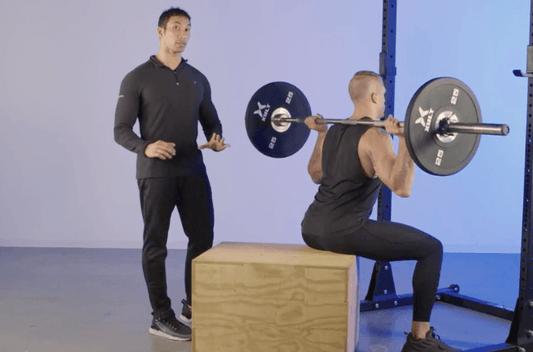The Rest Period Debate: Longer Rest Periods for More Muscle?
Table of Contents
The Rest Period Debate: Longer Rest Periods for More Muscle?
By: Robbie Durand
For decades, bodybuilders have been told to rest less than a minute between sets for maximal muscle growth. Most of the recommendations came from the fact that shorter rest periods result in greater increases in GH and testosterone levels, but this may be all smoke and mirrors.
Back in 2005, researchers compared short and long rest periods for three months, and much to the shock of the researchers, there was no difference in muscle growth. The researchers stated, “However, both 3-month training periods performed with either the longer or the shorter rest periods between the sets resulted in similar gains in muscle mass and strength. No statistically significant changes were observed in basal hormone concentrations or in the profiles of acute hormonal responses during the entire 6-month experimental training period. The present study indicated that, within typical hypertrophic strength-training protocols used in the present study, the length of the recovery times between the sets (2 vs. 5 minutes) did not have an influence on the magnitude of acute hormonal and neuromuscular responses or long-term training adaptations in muscle strength and mass in previously strength-trained men.”
Some researchers have even stated that longer rest periods are more effective for muscle growth.

More rest allows you to either lift more weight for the same number of repetitions or the same weight for more repetitions. There is more favorable research to suggest that longer rest periods are favorable for increasing muscle strength. Some of the more recent research suggests that 3-minute rest periods are the optimal rest periods to maintain strength while performing resistance exercise with multi-joint exercises, but little is known about how much rest is optimal for single joint exercises.
In the study, sixteen trained men performed four visits for 1, 2, 3, and 5-minute rest intervals between five consecutive sets. The researchers found increased total bench press repetitions completed with 2, 3 and 5-minutes versus 1-minute rest between sets. Declines in performance (relative to the first set) were observed starting as early as the second for the shorter 1-minute and only at the fifth set for all of the other rest conditions (2, 3 and 5-minute). This research suggests that when performing multi-joint exercises, around 3 minutes of rest between sets are needed.
What about if you’re performing a single joint exercise, such as a machine flye, do you still need three-minute rest periods between sets?
 Researchers examined different rest intervals on the performance of single and multi-joint exercises with near maximal loads. Fifteen trained men performed eight sessions (two exercises x four different rest intervals), each consisting of five sets with a 3-RM load. The exercises tested were: Researchers examined different rest intervals on the performance of single and multi-joint exercises with near maximal loads. Fifteen trained men performed eight sessions (two exercises x four different rest intervals), each consisting of five sets with a 3-RM load. The exercises tested were: |
-the machine chest fly (MCF) for the single joint exercise and the
– barbell bench press (BP) for the multi-joint exercise
Each protocol was tested with 1, 2, 3 and 5-minutes of rest between sets. At the end of the study, results indicate that when implementing a 3-RM load for the machine chest fly and bench press, a 1-minute rest interval between sets led to a significant reduction in the total repetitions completed over five consecutive sets. The researchers observed that significantly more reps were completed for the 2 minute, 3 minute, and 5-minute conditions compared to the 1-minute condition when using the machine chest fly. The researchers observed that significantly more reps were completed for the 3 minute and the 5 minute conditions compared to the 1-minute condition when using the bench press. They also noted that significantly more reps were completed for the 5 minute than the 2-minute condition. In conclusion, to maintain the best consistency in repetition performance, rest intervals of 2 minutes between sets are sufficient for the single joint exercises and 3 to 5-minutes for the multi-joint exercises. Thus, it appears that longer acute recovery time is needed for a multi-joint (core) exercise like the bench press versus a single-joint (assistance) exercise like the machine chest flye.
The practical applications of this study are that if you’re performing single joint exercises, you can take 2 minute rest periods, but if you’re performing multi-joint exercises, then you need to take 3 to 5 minute rest periods between sets.
Scudese E, Willardson JM, Simão R, de Salles BF, Senna G, and Miranda H. The effect of rest interval length on repetition consistency and perceived exertion during near maximal loaded bench press sets. J Strength Cond Res Nov, 2013
de Salles BF, Simão R, Miranda F, Novaes Jda S, Lemos A, Willardson JM. Rest interval between sets in strength training. Sports Med. 2009;39(9):765-77.
Henselmans M, Schoenfeld BJ. The effect of inter-set rest intervals on
resistance exercise-induced muscle hypertrophy. Sports Med. 2014
Dec;44(12):1635-43.
Ahtiainen JP, Pakarinen A, Alen M, Kraemer WJ, Häkkinen K. Short vs. long rest period between the sets in hypertrophic resistance training: influence on muscle strength, size, and hormonal adaptations in trained men. J Strength Cond Res. 2005 Aug;19(3):572-82.


















